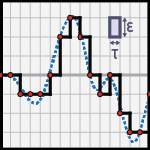Published/Posted: August 28, 2017
Authors: Hart, Joseph D.; Terashima, Yuta; Uchida, Atsushi; Baumgartner, Gerald B.; Murphy, Thomas E.; Roy, Rajarshi
DOI: 10.1063/1.5000056
arXiv: 1612.04415
Abstract: The never-ending quest to improve the security of digital information combined with recent improvements in hardware technology has caused the field of random number generation to undergo a fundamental shift from relying solely on pseudo-random algorithms to employing optical entropy sources. Despite these significant advances on the hardware side, commonly used statistical measures and evaluation practices remain ill-suited to understand or quantify the optical entropy that underlies physical random number generation. We review the state of the art in the evaluation of optical random number generation and recommend a new paradigm: quantifying entropy generation and understanding the physical limits of the optical sources of randomness. In order to do this, we advocate for the separation of the physical entropy source from deterministic post-processing in the evaluation of random number generators and for the explicit consideration of the impact of the measurement and digitization process on the rate of entropy production. We present the Cohen-Procaccia estimate of the entropy rate h(ε,τ) as one way to do this. In order to provide an illustration of our recommendations, we apply the Cohen-Procaccia estimate as well as the entropy estimates from the new NIST draft standards for physical random number generators to evaluate and compare three common optical entropy sources: single photon time-of-arrival detection, chaotic lasers, and amplified spontaneous emission.Citation:
J. D. Hart, Y. Terashima, A. Uchida, G. B. Baumgartner, T. E. Murphy and R. Roy, "Recommendations and illustrations for the evaluation of photonic random number generators", APL Photon. 2(9) 090901 (2017)
Export: BibTeX | RIS
Manuscript: Hart_APLPhotonics_2_090901_2017.pdf
